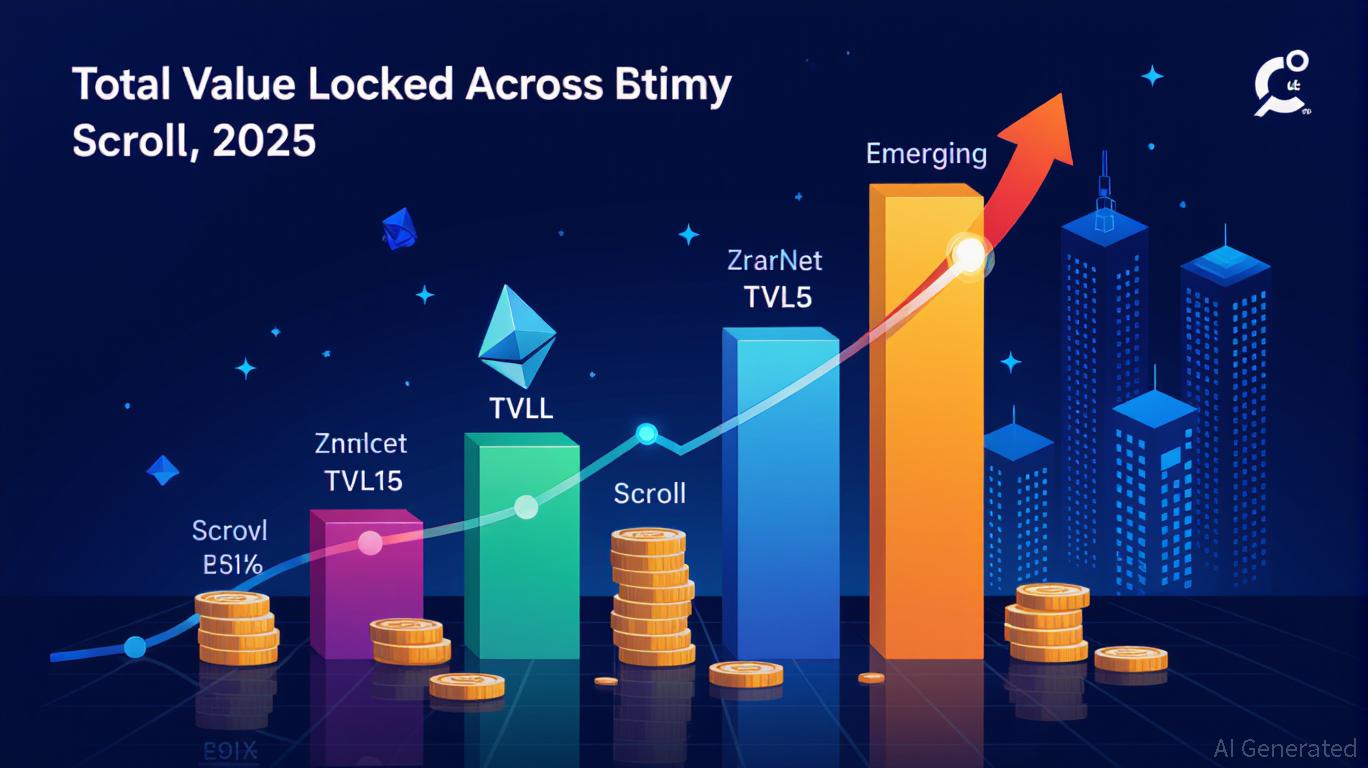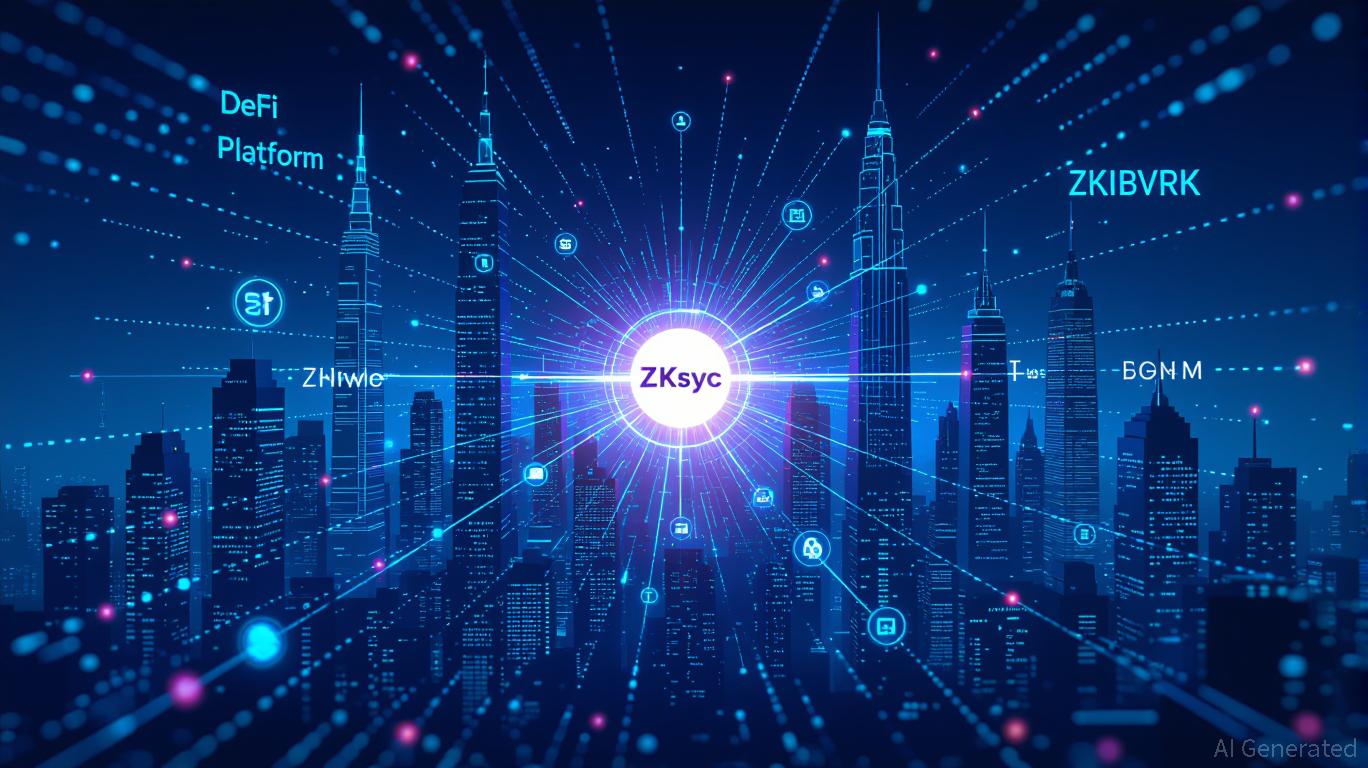Vitalik Buterin's Progress in Zero-Knowledge Technology and the Investment Opportunities within Ethereum's Layer-2 Ecosystem
- Vitalik Buterin prioritizes ZK technologies to optimize Ethereum's post-Merge scalability, targeting modexp precompile replacement for 50% faster ZK-proof generation. - ZKsync's Atlas upgrade enables 15,000+ TPS and near-zero fees by redefining L1-L2 liquidity, positioning ZK-based L2s as Ethereum's infrastructure backbone. - Dencun's "blob" data slashes L2 costs by 98%, driving Base and Arbitrum to surpass Ethereum's base layer in transaction volume and user adoption. - ZK L2s like ZKsync and StarkNet s
Technical Foundations: Vitalik’s ZK-Centric Vision
Vitalik Buterin has pointed out that the modexp precompile, an older feature used for modular exponentiation, is a major obstacle for scaling ZK-EVMs. Transitioning this function to standard EVM bytecode could cut ZK-proof creation times by as much as half, while also streamlining the
At the same time, Buterin has spotlighted ZKsync’s Atlas upgrade as a model for L2 scalability. This update achieves over 15,000 transactions per second (TPS), one-second finality, and minimal fees by transforming the liquidity dynamics between L1 and L2, as outlined in a

Market Dynamics: ZK L2s as Growth Drivers After the Merge
The Dencun upgrade to Ethereum in March 2024 further boosted the economic case for ZK L2s by introducing “blob” data, which cut L2 data posting expenses by 90–98%, as reported in a
From a financial perspective, ZK L2s are evolving into independent ecosystems. ZKsync’s revamped tokenomics, for instance, links the value of its ZK token to network earnings through mechanisms like buybacks and burns, creating a deflationary effect, as explained in a
Project Comparisons: ZKsync, StarkNet, and Scroll
During the third quarter of 2025, ZKsync’s Atlas upgrade showcased performance at an enterprise level, with its sequencer reaching 43,000 TPS and Airbender enabling transfers at just $0.0001 each, according to a
Investment Implications
The combination of technical breakthroughs and economic models in ZK L2s points to strong long-term prospects. For Ethereum, expanding L2 adoption could increase overall fees and boost ETH’s value, as L2 activity enhances the network’s usefulness. Still, issues like modexp inefficiencies and rivalry among L2s require careful consideration. Investors should focus on projects with transparent tokenomics, solid enterprise collaborations, and clear technical advantages—ZKsync’s Atlas and StarkNet’s Grinta are prime examples.

Conclusion
Vitalik Buterin’s advancements in ZK technology, along with the progress of L2 solutions like
Disclaimer: The content of this article solely reflects the author's opinion and does not represent the platform in any capacity. This article is not intended to serve as a reference for making investment decisions.
You may also like
ZK Atlas Enhancement: Transforming DeFi with Zero-Knowledge Powered Scalability
- ZKsync's October 2025 Atlas Upgrade introduces modular Layer 2/3 infrastructure, achieving 15,000 TPS and slashing proving costs via RISC-V-based Airbender prover. - The upgrade enables zero-fee DeFi transactions and real-time asset tokenization, with ZK token surging 50% and $19M in institutional funding for integration. - By unlocking RWA tokenization and addressing trust gaps through ZKP protocols, ZK infrastructure is redefining DeFi scalability while navigating regulatory and integration challenges.

Bitcoin Updates: Overcoming the $112K Barrier—How Global Trends and Institutional Players Intersect
- Bitcoin faces critical $112K threshold amid U.S. government shutdown-induced liquidity crunch, pushing Treasury General Account above $1 trillion. - Institutional demand wanes as BlackRock's BTC ETF inflows drop 90%, while Cathie Wood cuts 2030 price forecast by $300K due to stablecoin competition. - On-chain data reveals weak buying pressure below $100K support, though technical indicators suggest potential rebound if shutdown resolves. - Ledger plans New York IPO amid $2.17B crypto hack losses, while B

Kindness Meets Blockchain: $HUGS Demonstrates How Fan Communities Drive the Future of Crypto
- $HUGS token, linked to Milk Mocha's fanbase, sold out its whitelist rapidly, signaling community-driven crypto trends. - The 40-stage deflationary model features 23,000% price growth, token burns, and 60% APY staking to drive scarcity and liquidity. - DAO governance (HugVotes) lets holders shape NFTs, charity, and game features, blending fandom with decentralized decision-making. - Analysts highlight its Bitcoin-like scarcity strategy and real-world utility, positioning it as a 2025 crypto launch with 15

Uniswap (UNI) To Rally Higher? Key Bullish Pattern Formation Suggest So!
